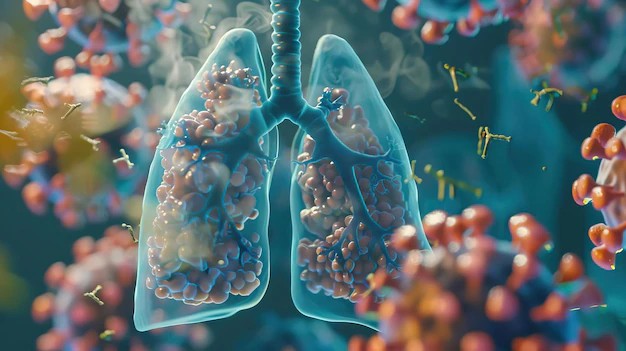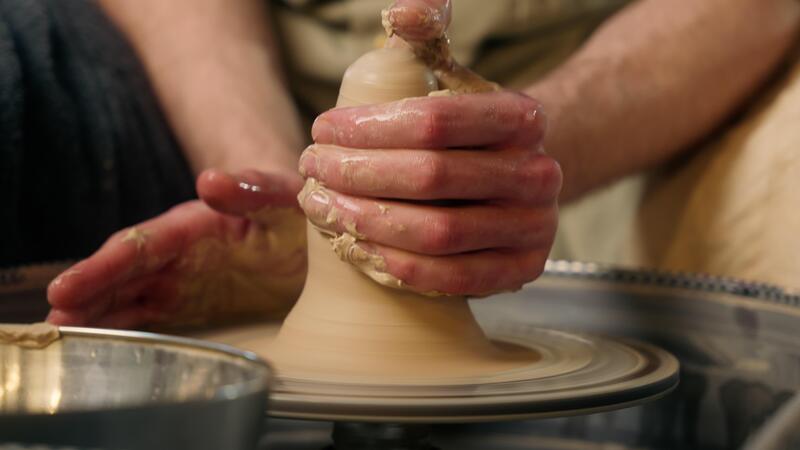
The Ultimate Guide to Mindfulness: Enhancing Mental Health and Transforming Your Daily Life
Introduction: Reclaiming Your Attention in a World of Distraction
In our hyper-connected, fast-paced world, the mind is often a whirlwind of activity. We juggle deadlines, scroll through endless feeds, and plan for a future that hasn’t arrived, all while replaying events from the past. This constant mental chatter can lead to chronic stress, anxiety, and a feeling of being disconnected from our own lives. What if there was a way to quiet the noise, not by silencing it, but by learning to listen differently? This is the promise of mindfulness. Far from being a mystical or esoteric concept, mindfulness is a practical, science-backed mental training technique. It is the basic human ability to be fully present, aware of where we are and what we’re doing, and not overly reactive or overwhelmed by what’s going on around us.
At its core, mindfulness is the practice of paying attention to the present moment on purpose and without judgment. It’s about stepping out of autopilot and consciously inhabiting your life as it unfolds, breath by breath. This comprehensive guide will demystify mindfulness, exploring its scientific foundations, practical techniques, and profound applications. We will delve into how this simple yet powerful practice can revolutionize not just your Mental Health and Stress Management, but also your approach to work, home, finances, and relationships, offering actionable insights for a more centered and fulfilling existence.
Understanding Mindfulness: The Core Principles and Scientific Backing
To truly appreciate the power of mindfulness, it’s essential to understand its foundational principles and the compelling scientific evidence that supports its benefits. It isn’t about emptying the mind or achieving a state of perpetual bliss; rather, it’s a skill of focused awareness that fundamentally reshapes our relationship with our own thoughts and feelings.
The Pillars of Mindfulness
Mindfulness rests on two key pillars that work in tandem:
- Present-Moment Awareness: This is the intentional act of bringing your attention to your immediate experience. Instead of being lost in thought about a work project (future) or a past conversation (past), you anchor your focus on the “now.” This could be the sensation of your breath entering and leaving your body, the feeling of your feet on the ground, or the sounds in your environment. This practice trains the “attention muscle” of the brain, making it easier to focus and harder to be swept away by distractions.
- Non-Judgmental Observation: This is arguably the most transformative aspect of mindfulness. As you pay attention to the present, you will inevitably notice thoughts, emotions, and physical sensations. The practice is to observe them without labeling them as “good” or “bad,” “right” or “wrong.” If a thought of anxiety arises, you simply note “anxiety is here” rather than getting caught in a story about why you’re anxious or what it means. This creates a crucial space between you and your mental states, allowing you to respond thoughtfully instead of reacting impulsively.
The Neuroscience of a Calmer Mind
What was once considered a purely spiritual practice is now a major focus of neuroscience, and the findings are remarkable. Using fMRI and other imaging technologies, scientists have observed that regular mindfulness practice can induce neuroplasticity—the brain’s ability to reorganize itself by forming new neural connections.
Key changes include:
- Amygdala Regulation: The amygdala is the brain’s alarm system, responsible for the “fight-or-flight” response. Studies show that after several weeks of mindfulness training, the gray matter density in the amygdala decreases. This correlates with reduced perceived stress and anxiety. The alarm bell doesn’t ring as loudly or as often.
- Prefrontal Cortex Strengthening: The prefrontal cortex is the hub of higher-order functions like concentration, decision-making, and emotional regulation. Mindfulness practice has been shown to thicken this area of the brain, enhancing our ability to manage difficult emotions and maintain focus. This is a cornerstone of improved Work-Life Balance and overall Holistic Health.
This data provides a clear picture: mindfulness is not just a feel-good exercise. It is a form of mental conditioning that physically alters the brain for greater resilience, clarity, and emotional stability, making it a critical tool in any modern Health & Wellness toolkit.

Practical Mindfulness Techniques for a Busy World
The beauty of mindfulness is its accessibility. You don’t need special equipment or a silent retreat to begin. The practice can be integrated into your life in small, manageable moments. Here are some foundational techniques to get you started on your journey.
Foundational Practice: Mindful Breathing
The breath is the ultimate anchor to the present moment. It’s always with you, and focusing on it can instantly pull you out of a spiral of thoughts. This is a simple yet profound Meditation.
- Find a Comfortable Position: Sit on a chair with your feet flat on the floor or on a cushion on the ground. Keep your back straight but not stiff. You can close your eyes or keep a soft, unfocused gaze.
- Bring Attention to Your Breath: Without changing how you breathe, simply notice the physical sensation of the breath. Feel the air entering your nostrils, filling your lungs, and the gentle fall of your chest or abdomen as you exhale.
- Stay with the Sensation: Choose one spot—the tip of your nose, your chest, or your belly—and rest your full attention there, feeling each inhale and exhale.
- Gently Return Your Focus: Your mind will wander. This is not a failure; it’s what minds do. The moment you notice your mind has drifted, gently and without judgment, guide your attention back to the breath. Every time you do this, you are strengthening your mindfulness muscle. Start with just 3-5 minutes a day.
The Body Scan Meditation
This practice is excellent for cultivating a deeper mind-body connection and is particularly helpful for improving Sleep Health when done before bed. It involves systematically sweeping your attention through the body.
Lie down comfortably on your back. Starting with the toes of your left foot, bring a curious and kind attention to any sensations you find there—tingling, warmth, pressure, or even nothing at all. Slowly, move your attention up your foot, to your ankle, calf, and so on, progressing through your entire body. The goal isn’t to change or fix anything, but simply to notice what is present. This practice helps you inhabit your body and release stored physical tension you may not have been aware of.
Integrating Mindfulness into Movement
Mindfulness isn’t limited to sitting still. You can practice it while walking, stretching, or doing yoga. As seen in much Yoga News, the integration of breath and movement is a core tenet. During a mindful walk, pay attention to the sensation of your feet making contact with the ground, the movement of your legs, and the feeling of the air on your skin. When practicing, this focus on somatic experience is one of the most valuable Fitness Tips for preventing injury and improving form. This turns a routine activity into an opportunity for presence and grounding.
The Mindful Lifestyle: Applying Awareness to Every Aspect of Your Life
True transformation occurs when mindfulness moves beyond a formal 5-minute practice and permeates your entire day. It becomes a lens through which you view and engage with the world, impacting everything from your productivity to your financial habits.
Mindfulness in Your Career and Productivity

In the workplace, mindfulness is a superpower. By training your attention, you can combat the myth of multitasking and embrace single-tasking, leading to higher-quality work and reduced errors. Before a meeting, take three mindful breaths to center yourself for more effective communication. When feeling overwhelmed, use a “micro-pause” of 60 seconds to focus on your breath and reset your nervous system. These Productivity Tips can dramatically improve your focus and provide better Work-Life Balance, which is crucial for those in demanding fields or navigating Remote Work. This is powerful Career Advice for long-term sustainability and success.
Creating a Mindful Home Environment
Your home should be a sanctuary, and mindfulness can help you cultivate that. The principles of Minimalism and Decluttering are inherently mindful; by consciously choosing what to keep, you reduce external chaos, which helps calm internal chaos. Use Interior Design and Home Decor to create a dedicated space for quiet reflection—perhaps a comfortable chair by a window with good natural light. Even Home Improvement projects, like painting a room a calming color, can be a mindful act. You can also leverage Technology for Home, using a Smart Home system to dim lights and play calming sounds to set a peaceful mood.
Mindful Consumption and Finance
Mindfulness introduces a crucial pause between impulse and action, which is a game-changer for Personal Finance. Before making a non-essential purchase, take a breath and ask: “Do I truly need this? Why am I buying it?” This simple check-in can curb emotional spending and align your purchases with your values, reinforcing your Financial Planning and Budget Tips. This awareness extends to broader consumption patterns, fostering a connection to Sustainable Living. By being more mindful of what we buy and discard, we naturally move toward a more Eco-Friendly Living and Zero Waste lifestyle.
Mindful Eating and Nutrition
How often do you eat while scrolling on your phone or watching TV, only to realize your plate is empty with no memory of the meal? Mindful eating is the practice of bringing full attention to the experience of eating. Pay attention to the colors, smells, and textures of your food. Chew slowly and savor each bite. This not only enhances enjoyment but also improves digestion and helps you recognize your body’s natural hunger and fullness cues, a key component of the latest Nutrition News. It transforms Meal Planning and preparing Healthy Recipes from a chore into a nourishing, sensory experience.
Navigating the Path: Best Practices and Common Pitfalls
Embarking on a mindfulness journey is a significant step toward Personal Development and Self-Improvement. However, like any new skill, it comes with a learning curve. Understanding best practices and common hurdles can help you build a resilient and rewarding practice.
Best Practices for a Sustainable Practice
- Start Small and Be Consistent: The goal is not a 60-minute meditation marathon on day one. Start with just 5 minutes a day. Consistency is far more important than duration. A short daily practice builds a stronger habit than a long, infrequent one. – Find Your Anchor: While the breath is a common anchor, you can also use bodily sensations, sounds, or a visual point of focus. Experiment to see what works best for you.
- Be Kind to Yourself: The practice of mindfulness is rooted in compassion. There will be days when your mind is incredibly busy and you feel you’ve “failed.” This is impossible. The practice is simply to notice and return, and self-kindness is a crucial part of that return.
- Leverage Resources: There are countless apps, guided meditations, and books available. Finding a teacher or community can also provide invaluable support and accountability, fostering a sense of Community Living.
Common Pitfalls to Avoid
- Expecting a Blank Mind: A common misconception is that meditation is about stopping your thoughts. This is not the goal and will only lead to frustration. The goal is to change your relationship with your thoughts—to see them as passing mental events rather than absolute truths you must engage with.
- Striving and Judgment: Mindfulness is the art of non-striving. If you are constantly judging your practice (“Am I doing this right? Why can’t I focus?”), you are feeding the very mental habits you’re trying to observe. Notice the judgment, and then let it go.
- Inconsistency: Like physical exercise, the benefits of mindfulness are cumulative. Sporadic practice will yield sporadic results. Weave it into your daily routine, like brushing your teeth, to ensure it sticks.
Conclusion: The Lifelong Journey of Presence
Mindfulness is not a quick fix or a final destination; it is a lifelong journey of coming back to the present moment, again and again. It is a simple, secular, and scientifically validated practice that offers a powerful antidote to the stress and distraction of modern life. By cultivating the ability to pay attention with kindness and curiosity, you unlock a deeper connection to yourself and the world around you. The benefits ripple outward, enhancing your Mental Health, strengthening your Relationships, boosting your productivity, and fostering a profound sense of well-being.
Whether you start with three mindful breaths at your desk or a daily body scan meditation, the simple act of choosing to be present is a radical act of self-care. It is a commitment to living your life more fully, not in the imagined future or the remembered past, but right here, right now, in the only moment you ever truly have.
Archives
- December 2025
- November 2025
- October 2025
- September 2025
- August 2025
- October 2023
- September 2023
- August 2023
- July 2023
- June 2023
- May 2023
- April 2023
- March 2023
- February 2023
- January 2023
- December 2022
- November 2022
- October 2022
- September 2022
- August 2022
- June 2022
- May 2022
- April 2022
- March 2022
- January 2022
- December 2021
- November 2021
- October 2021
- August 2021
- November 2020
- July 2020
- May 2020
- April 2020
- March 2020
- August 2018
- July 2018
- June 2018
- April 2018
- March 2018
Categories
- Age Groups
- AI/ML
- Alternative Medicine
- Animal Health
- Animal Husbandry
- Animals
- Anti-Aging
- Architectural Design
- Auditory Science
- Augmented Reality
- Automation
- Babies
- Baby
- Beauty & Skincare
- Biohacking
- Biomechanics
- Book Reviews
- Breastfeeding
- Budgeting
- Budgeting Strategies
- Business
- Cardiovascular Health
- Career Advice
- Career Development
- Career Growth
- Cats
- Chess
- Chronobeauty
- Circular Economy
- Cleaning Tips
- Cloud Computing
- Cognitive Health
- Cognitive Performance
- Cognitive Science
- Community
- Community Building
- Community Engagement
- Community Living
- Computer Vision
- Consumer Guides
- Consumer Trends
- Container Gardening
- Content Analysis
- Content Non-Technical
- Content Strategy
- Cosmetic Chemistry
- Cultural Events
- Cycling
- Data Analysis
- Data Engineering
- Data Science
- Design Psychology
- Developer Productivity
- Diet
- Diet
- Digital Identity
- Digital Media
- Digital Wellbeing
- DIY Projects
- Dogs
- Engineering Culture
- Entertainment News
- Environmental Impact
- Environmental Science
- Equity Compensation
- Ethical AI
- Exercise
- Exercise Science
- Exercise Technique
- Exotic Pets
- Fall Gardening
- Family
- Family Health
- Family Life
- Fashion Business
- Fashion Industry
- Fashion News
- Fashion Tech
- Financial Analysis
- Financial Optimization
- Financial Planning
- Flooring Maintenance
- Food
- Food Psychology
- Food Safety
- Food Tech
- Functional Fitness
- Functional Training
- Future Of Work
- Garden Care
- Garden Maintenance
- Gardening Tips
- Greece
- Greek
- Greek Food
- Gymnastics
- Hardware Engineering
- Health
- Health And Wellness
- Health Informatics
- Health Science
- Health Tech
- Healthcare Management
- Healthy Eating
- Healthy Recipes
- Holistic Health
- Holistic Wellness
- Home & Living
- Home Decor
- Home Financing
- Home Health
- Home Improvement
- Home Organization
- Horticulture
- Identity Management
- Industrial Design
- Industry Analysis
- Infant Nutrition
- Infrastructure Management
- Ingredient Deep Dive
- Integrative Health
- Integrative Medicine
- Interior Design
- Internet of Things
- Internet of Things (IoT)
- Invalid Request
- Investment Strategies
- Investment Strategy
- IoT
- Kids
- Leadership Development
- Learning Strategies
- Lifestyle
- Lifestyle Brands
- Lifestyle News
- Lifestyle Optimization
- Literary Criticism
- Literature
- Logistics Management
- Material Science
- Materials Science
- Meal Planning
- Media Analysis
- Meditation
- Mental Health
- Mental Performance
- Mental Wellness
- Miami
- Miami Food
- Mind And Body
- Minimalism
- Mobile Development
- Neuroscience
- No Applicable Categories
- Nutrition
- Nutrition News
- Operating Systems
- Operational Resilience
- Opinion
- Organization Tips
- Outdoor Living
- Over 40
- Over 50
- Over 60
- Parenting
- Parenting
- Parenting Strategies
- Performance
- Personal Development
- Personal Finance
- Personal Growth
- Personal Productivity
- Pet Care
- Pet Safety
- Philosophy
- Politics
- Productivity
- Protein
- Psychology
- Psychology of Space
- Reading Culture
- Real Estate Investment
- Recipes
- Regulatory Compliance
- Remote Work
- Renovation Planning
- Resource Management
- Responsible Pet Ownership
- Retail Strategy
- Robotics
- Science
- Seafood
- Seasonal Gardening
- Security
- Self-Care
- Skincare Science
- Skincare Trends
- Sleep
- Sleep Health
- Smoothies
- Social Impact
- Soft Skills
- Soil Health
- Spatial Computing
- Spatial Design
- Stress Management
- Supplements
- Sustainability
- Sustainability Science
- Sustainable Engineering
- Sustainable Fashion
- Systems Engineering
- Tax Optimization
- Tax Strategy
- Tech Investment
- Travel
- Travel News
- Travel Safety
- Travel Tips
- Trend Analysis
- Uncategorized
- Urban Planning
- User Experience
- Veggie
- Virtual Events
- Volunteering
- Wealth Management
- Wearable Technology
- Wellness
- Wellness Technology
- Work-Life Balance
- Workplace Culture
- World
- Writing
- Writing Skills
- Yoga News
- Zero Waste




Leave a Reply